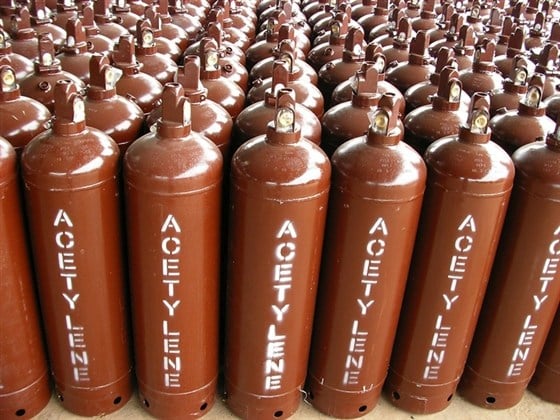What is acetylene gas?
Acetylene (derived from the French word acetylène /asetilɛn/), also written as acetylene (systematic name: ethyne) is the chemical compound with the formula C2H2. It is a hydrocarbon and the simplest alkin. This colorless gas is widely used as a fuel and in the synthesis of other compounds. It is unstable in pure form and is therefore usually left in a solution. Pure acetylene is odorless, but the common type on the market often has an odor due to impurities.
Acetylene gas properties
- Acetylene occurs as a colorless gas with a faint garlic odor. Easily ignited and ignited with a soot flame. The gas is lighter than air. Flames can re-ignite back to the source of the leak very easily. Under conditions of prolonged exposure to fire or heat, containers may burst
- Bounce and explode.
- It is a substance that is sparingly soluble in water.
- Density: 1,097 kg m-3
- Melting point: – 80.8 oC (192.4 K, -113.4 oF)
- Boiling Point: – 84 oC (189 K, -119 oF)
- When acetylene is burned in the air, it burns with a bright flame and gives off a lot of heat
Ensure safety in use and production
There are strict measures you need to take with acetylene before it can be used in industry. The manufacturing process needs to be perfect to ensure it is pure. Otherwise, it may react with oxygen or impurities and explode. Before industrial use, dissolve acetylene in solvent. This prevents decomposition and allows for larger, safe storage of gas at low pressure.



 Tiếng Việt
Tiếng Việt 日本語
日本語 한국어
한국어 中文 (中国)
中文 (中国)
